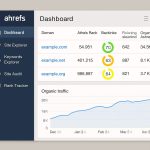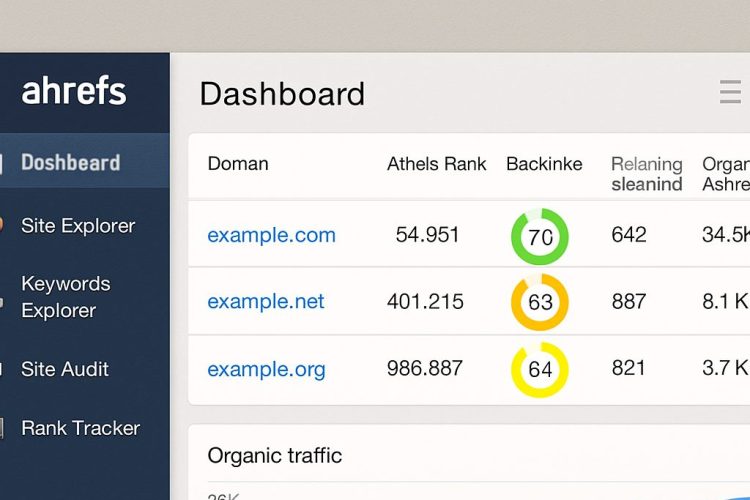

Understanding the Importance of Social Media Trends
Social media trends can shape how brands communicate with their audiences. They influence content creation, engagement tactics, and even business strategies. By staying informed about these trends, you can tailor your approach to better connect with your audience, increase engagement, and drive growth.
The Impact on Brand Communication
Social media trends dictate the tone and style of brand messaging. As trends evolve, brands must adapt their communication strategies to maintain relevance. For instance, the rise of video content means that brands should prioritize video marketing in their communication plans. Understanding these shifts ensures that your messaging aligns with current consumer expectations.
Influence on Content Creation
Trends often introduce new content formats and styles that captivate audiences. From short-form videos to interactive polls, being aware of these trends can inspire fresh content ideas. By incorporating trending formats, you increase the likelihood of your content being shared and discussed, thereby amplifying your reach.
Trends as Business Strategy Drivers
Adapting to social media trends can inform broader business strategies. For instance, if a new platform gains popularity among your target audience, it might be worth investing resources to establish a presence there. Recognizing these opportunities early can give your brand a competitive edge and open new avenues for growth.
Key Strategies for Staying Current

1. Follow Industry Leaders and Influencers
One of the most effective ways to stay updated is to follow industry leaders and influencers in your niche. These individuals often have their finger on the pulse of what’s trending and can provide valuable insights into emerging patterns. Platforms like Twitter and LinkedIn are excellent places to connect with thought leaders and gain access to their latest findings and opinions.
Building a Curated List
Create a curated list of influencers and thought leaders relevant to your industry. Tools like Twitter Lists can help organize these individuals, making it easier to monitor their updates. This approach ensures that you receive timely insights from voices that matter most to your niche.
Engaging with Influencer Content
Beyond following, actively engage with content from industry leaders. Comment on posts, share their insights, and participate in discussions. This interaction not only keeps you informed but also positions you as an active member of the community, potentially leading to new networking opportunities.
Leveraging Influencer Insights for Your Strategy
Influencers often share not just trends but also practical applications of these trends. Use their insights to refine your strategies and apply their successful tactics to your own campaigns. By doing so, you can benefit from their experiences and avoid potential pitfalls.
2. Utilize Social Media Monitoring Tools
Social media monitoring tools like Hootsuite, Sprout Social, and Brandwatch can help you track trending topics and hashtags. These tools allow you to set up alerts for specific keywords, helping you stay informed about changes and new developments in real-time. By monitoring these trends, you can quickly adapt your content strategy to align with what your audience is interested in.
Setting Up Alerts and Dashboards
Configure alerts for key industry terms and hashtags that are relevant to your brand. Dashboards can provide a real-time overview of trending topics, allowing you to react swiftly. This proactive monitoring ensures you never miss out on significant conversations or shifts in your niche.
Analyzing Competitor Activity
Use monitoring tools to keep an eye on competitors and their engagement strategies. By analyzing their content and audience interactions, you can identify successful tactics to emulate or gaps in their strategy that you can exploit. This competitive analysis is crucial for staying ahead in a crowded digital space.
Integrating Insights into Content Planning
The data gathered from monitoring tools can inform your content calendar. Schedule posts that align with trending topics or capitalize on emerging discussions. By aligning your content strategy with real-time insights, you ensure that your brand remains relevant and top-of-mind for your audience.
3. Engage with Your Audience
Listening to your audience is a powerful way to understand what trends resonate with them. Engage with your followers by asking questions, conducting polls, and inviting feedback. This interaction not only provides insights into popular topics but also strengthens your connection with your audience, fostering loyalty and trust.
Creating Interactive Content
Develop content that encourages audience participation, such as polls, quizzes, and live Q&A sessions. Interactive content not only boosts engagement but also provides direct feedback on audience preferences and interests. This feedback loop is invaluable for adapting your strategy to meet audience expectations.
Building Community through Engagement
Encourage community-building by responding to comments and messages promptly. Recognize and celebrate user-generated content, fostering a sense of belonging among your followers. A strong community is more likely to engage with your content and advocate for your brand.
Using Feedback to Guide Content Strategy
Regularly review audience feedback and engagement metrics to identify trends in their interests. Use this information to adjust your content strategy, ensuring it aligns with audience preferences. This data-driven approach helps maintain a dynamic and responsive content plan.
Leveraging Social Media Insights and Analytics
Social media platforms offer a wealth of analytics tools to help you understand how your content is performing. By analyzing metrics such as likes, shares, comments, and reach, you can identify which trends are working for your audience. Use these insights to inform your content strategy and focus on what drives the most engagement.
Deep Dive into Engagement Metrics
Beyond basic metrics, delve into deeper analytics such as audience demographics, peak engagement times, and content type performance. Understanding these nuances allows for more targeted content strategies that cater to specific audience segments and maximize engagement.
Identifying High-Performing Content
Use analytics to pinpoint which types of content resonate most with your audience. Whether it’s video, infographics, or blog posts, identifying high-performing content allows you to allocate resources effectively and maximize impact.
Tracking Engagement Over Time
Monitor engagement metrics over time to identify patterns and trends in audience behavior. This long-term analysis can highlight seasonal trends or shifts in content preferences, guiding future content planning and strategy adjustments.
Leveraging Data for Strategic Decisions
Translate analytics data into actionable insights that inform broader strategic decisions. Whether it’s launching a new campaign or adjusting your posting schedule, data-driven decisions are more likely to yield positive results and foster growth.
Stay Informed with Social Media Updates

Platforms like Facebook, Instagram, and TikTok regularly introduce new features and updates. Keeping track of these changes can help you leverage new opportunities for engagement. Subscribe to official blogs, newsletters, and forums to receive updates directly from the platforms themselves.
Subscribing to Official Channels
Ensure you subscribe to official platform blogs and newsletters for direct updates on features and changes. These sources provide first-hand information on algorithm updates, new tools, and best practices, keeping you informed and prepared.
Participating in Online Communities
Join online forums and communities dedicated to social media marketing. Platforms like Reddit or specialized Facebook groups are excellent for sharing insights and discussing updates with peers, offering diverse perspectives and solutions.
Experimenting with New Features
Whenever platforms release new features, experiment with them to understand their potential impact. Early adoption can set you apart from competitors and showcase your brand as innovative and adaptable, attracting tech-savvy audiences.
Exploring Viral Content and New Trends
Understanding what makes content go viral can provide insights into current trends. Study viral posts to identify common themes, formats, and styles. This analysis can help you create content that is more likely to resonate with a broader audience and increase your chances of going viral.
Dissecting Viral Content
Analyze viral content to understand the elements that contribute to its success. Look for patterns in storytelling, emotional appeal, and timing. By dissecting these elements, you can craft content that has a higher potential to engage and spread.
Emotional and Relatable Storytelling
Viral content often resonates due to its emotional and relatable nature. Incorporate storytelling that elicits strong emotions or connects with universal experiences. This approach increases shareability and fosters a deeper connection with your audience.
Timing and Cultural Relevance
The timing of content release can significantly impact its virality. Monitor current events and cultural trends to align your content with what’s happening in the world. Relevance enhances relatability and the likelihood of your content being shared.
Unique Formats and Creative Presentation
Viral content often features unique formats or creative presentations. Experiment with different media types, such as GIFs, memes, or AR experiences, to capture audience attention. Creativity sets your content apart, increasing engagement chances.
Embrace New Social Media Platforms
New platforms often introduce unique features and cater to different audiences. By exploring and experimenting with these platforms, you can reach new demographics and stay ahead of competitors who may be slower to adapt. Keep an eye on emerging platforms and assess their potential for your brand.
Assessing Platform Potential
Evaluate new platforms based on your target audience and brand goals. Consider factors such as user demographics, engagement potential, and content compatibility. A thorough assessment ensures that your efforts align with your strategic objectives.
Creating Platform-Specific Content
Tailor your content to suit the unique characteristics of each platform. Understand the platform’s culture and user expectations to create content that resonates. Platform-specific content enhances engagement and maximizes your reach.
Building a Presence from the Ground Up
Establishing a presence on a new platform requires consistent effort and experimentation. Engage with early adopters, participate in platform-specific challenges, and collaborate with existing users to build a community. Starting early positions your brand as a leader in new spaces.
The Role of Digital Marketing Trends
Social media trends are closely linked to broader digital marketing trends. By integrating digital marketing strategies such as influencer partnerships, paid advertising, and SEO, you can enhance your social media efforts. These strategies can amplify your reach and ensure your content is visible to the right audience.
Integrate Digital Marketing Strategies
Digital marketing strategies are essential for amplifying your social media presence. Influencer partnerships, paid advertising, and SEO are key components that can enhance your reach and visibility.
Leveraging Influencer Partnerships
Collaborate with influencers who align with your brand values and audience. Influencers can introduce your brand to new audiences and lend credibility to your offerings. Choose partners whose followers match your target demographic for maximum impact.
Optimizing Paid Advertising
Paid advertising on social media platforms allows for targeted reach and measurable results. Use platform-specific ad tools to create campaigns that resonate with your audience. Analyze ad performance regularly to optimize for better results.
Enhancing SEO for Social Media
Optimize your social media profiles and content for search engines. Use relevant keywords, include links to your website, and maintain consistent branding. Improved SEO enhances discoverability and drives organic traffic to your profiles.
Adapt to Changes in Consumer Behavior
Consumer behavior is continually evolving, influenced by factors like technology advancements and cultural shifts. Stay informed about these changes to anticipate new trends and adapt your social media strategies accordingly. This proactive approach can position your brand as a leader in your industry.
Monitoring Technological Advancements
Stay abreast of technological advancements that impact consumer behavior, such as AI, AR, and VR. Understanding these technologies allows you to innovate your content and engagement strategies, meeting evolving consumer expectations.
Understanding Cultural Shifts
Cultural shifts influence consumer preferences and behavior. Monitor societal trends, values, and discussions to align your brand messaging with these changes. Being culturally aware enhances brand relevance and consumer connection.
Anticipating and Responding to Behavior Changes
Use data and insights to anticipate shifts in consumer behavior. Develop flexible strategies that can quickly respond to these changes, ensuring your brand remains relevant and competitive. Proactive adaptation positions your brand as forward-thinking and responsive.
Conclusion
Staying on top of social media trends is essential for anyone looking to enhance their online presence and engage effectively with their audience. By following industry leaders, utilizing analytics tools, and embracing new platforms, you can keep your content relevant and compelling. Remember, the key to success is not just following trends but understanding them and using them to inform your strategy.
By implementing these strategies, you’ll be well-equipped to navigate the ever-changing world of social media and capitalize on the latest trends to achieve your goals. Stay curious, stay informed, and most importantly, stay adaptable to ensure continued success in your social media endeavors.


